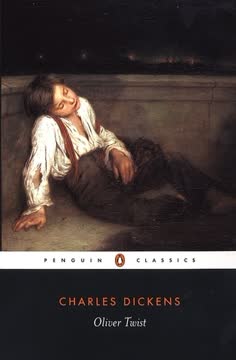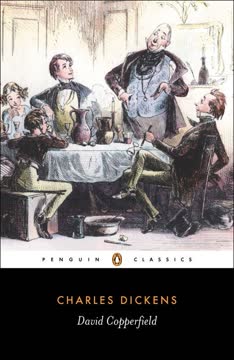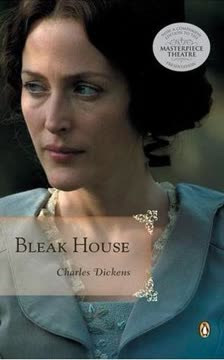Plot Summary
Turbulent Times and Tense Travels
The narrative begins in 1775, a period marked by stark contrasts and societal unrest in England and France. Crime and revolution loom large, setting a tense backdrop as a mail coach trudges through the mud to Dover. The passengers, wary of highwaymen, reflect the broader anxiety of the times, mirroring the chaos and calm that define the era.
A Mysterious Message Delivered
As the mail coach reaches its destination, a rider named Jerry delivers a message to Mr. Jarvis Lorry from Tellson's Bank. The message, "Recalled to Life," hints at a past that refuses to stay buried. Lorry is tasked with traveling to Paris to inform Lucie Manette that her father, Dr. Manette, long thought dead, is alive, setting the stage for a journey of revelation and reunion.
Secrets and Shadows of Night
Lorry's journey to Paris is haunted by dreams of resurrection, symbolizing the revival of Dr. Manette. The night is filled with shadows, both literal and metaphorical, as Lorry grapples with the implications of his mission. This journey reflects the broader theme of resurrection and the unknown consequences of unearthing the past.
Revelations and Resolutions
In Paris, Lorry and Lucie find Dr. Manette, a broken man, imprisoned for years without reason. Lucie's presence begins to heal him, symbolizing hope and renewal. The reunion is bittersweet, as Dr. Manette struggles to reclaim his identity and adapt to a world that has moved on without him, highlighting themes of trauma and resilience.
A City on the Brink
The narrative shifts to Paris, where the seeds of revolution are taking root. The Defarges, owners of a wine shop, are central figures in the burgeoning rebellion. Madame Defarge, in particular, is a formidable presence, knitting a register of those marked for death. The city is a powder keg, with tensions simmering just below the surface, ready to explode into violence.
The Looming Storm of Revolution
As the story progresses, the Defarges and their compatriots prepare for the coming storm. The oppression and injustice faced by the common people fuel their anger and resolve. The narrative foreshadows the inevitable clash between the aristocracy and the revolutionaries, setting the stage for the dramatic events to come. The theme of resurrection is mirrored in the societal upheaval, as France prepares to rise from the ashes of its past.
Madame Defarge's Unyielding Resolve
In revolutionary Paris, Madame Defarge is consumed by a desire for retribution against the aristocracy. Her knitting encodes the names of those marked for death, including Charles Darnay. Her personal vendetta against the Evremonde family fuels her determination to see Darnay executed, embodying the revolution's relentless and unforgiving nature.
Lucie's Heartfelt Farewell
As Darnay faces execution, Lucie Manette is granted a brief, heart-wrenching farewell. She clings to him, offering words of love and support, while Darnay reassures her of his peace with the situation. Their daughter, little Lucie, adds to the emotional weight of the moment. The family grapples with the impending loss, each trying to find strength in the face of despair.
Carton's Secret Plan Unfolds
Sydney Carton, who bears a striking resemblance to Darnay, devises a bold plan to save him. He visits the Defarges' wine shop to gather information and later secures access to the prison. Carton intends to switch places with Darnay, sacrificing himself to save Lucie's husband. His love for Lucie and desire to give her a future free from sorrow drive his actions.
A Desperate Plea for Mercy
Dr. Manette, once a prisoner of the Bastille, uses his influence to appeal for Darnay's release. He approaches the revolutionary leaders, hoping his past suffering will sway them. However, the fervor of the revolution and Madame Defarge's vendetta prove insurmountable. Despite his efforts, Dr. Manette is unable to prevent Darnay's condemnation, leaving him devastated.
The Shadow of the Guillotine
As the day of execution approaches, the atmosphere in Paris is tense. The guillotine, a symbol of the revolution's ruthless justice, looms large. Darnay, along with other condemned prisoners, awaits his fate. The inevitability of death hangs over Darnay, yet he finds solace in the thought of Lucie and their child. The revolution's relentless march forward leaves no room for mercy or reprieve.
A Final Act of Sacrifice
In a final act of love and redemption, Sydney Carton executes his plan to save Darnay. He gains access to the prison, drugs Darnay, and switches places with him. Carton faces the guillotine with a sense of peace, knowing his sacrifice will give Lucie and her family a chance at happiness. His final thoughts are of Lucie, and he finds comfort in the belief that his sacrifice will not be in vain.
Unexpected Visitor and Unseen Plans
In the shadowy confines of a prison cell, Charles Darnay is startled by the unexpected appearance of Sydney Carton. Carton, with a mysterious air, reveals his plan to save Darnay from the guillotine. He instructs Darnay to switch clothes with him, intending to take his place. Darnay, bewildered and resistant, is urged by Carton to comply for the sake of his family. The urgency of the situation leaves Darnay with little choice but to follow Carton's instructions, setting the stage for a daring escape.
A Bold Exchange and Escape
With a swift and determined resolve, Carton executes his plan. He drugs Darnay into unconsciousness and swaps their clothes, assuming Darnay's identity. The switch is seamless, and Carton, now dressed as Darnay, prepares to face the guillotine. Meanwhile, Darnay, disguised as Carton, is smuggled out of the prison by a sympathetic guard. The exchange is a testament to Carton's love for Lucie and his desire to give her a future free from sorrow.
Madame Defarge's Relentless Pursuit
Madame Defarge, driven by a deep-seated vendetta, plots to eliminate Lucie and her family. She believes that the revolution's justice must be absolute, sparing no one associated with the aristocracy. Her determination is unwavering, and she sets out to confront Lucie, intending to ensure that the Evremonde line is completely eradicated. Her relentless pursuit underscores the revolution's unforgiving nature.
A Desperate Struggle for Survival
In a tense and dramatic encounter, Miss Pross confronts Madame Defarge, who has come to capture Lucie. The two women, representing opposing forces, engage in a fierce struggle. Miss Pross, fueled by love and loyalty, manages to thwart Defarge's plans, resulting in Defarge's accidental death. This confrontation highlights the personal sacrifices made in the name of love and loyalty amidst the chaos of revolution.
The Final Sacrifice and Redemption
As Carton awaits his fate at the guillotine, he finds solace in the knowledge that his sacrifice will bring happiness to Lucie and her family. His final moments are marked by a sense of peace and redemption, as he reflects on the impact of his actions. Carton's selfless act is a powerful testament to the themes of love, sacrifice, and redemption, offering a glimmer of hope amidst the darkness.
A New Dawn and Hope
With Carton's sacrifice, a new chapter begins for Lucie and her family. They escape the turmoil of revolutionary France, carrying with them the memory of Carton's heroism. The narrative closes with a vision of a brighter future, where the seeds of hope and renewal are sown. Carton's legacy lives on, a reminder of the enduring power of love and the possibility of redemption.
Characters
Jarvis Lorry
Lorry is a loyal employee of Tellson's Bank, tasked with a delicate mission to reunite Lucie Manette with her father. He is a man of business, yet he shows compassion and care for Lucie and Dr. Manette, becoming a trusted friend and ally. His journey symbolizes the intersection of personal and professional duties, as he navigates the complexities of human relationships.
Lucie Manette
Lucie is a young woman whose life is transformed by the revelation that her father is alive. Her compassion and strength are central to the story, as she becomes the emotional anchor for Dr. Manette. Her presence is a catalyst for his recovery, symbolizing the power of love and family to heal deep wounds.
Dr. Alexandre Manette
Once a brilliant physician, Dr. Manette is a victim of unjust imprisonment, emerging as a broken man. His journey from darkness to light is a central theme, as he struggles to reclaim his identity and place in the world. His story is a poignant exploration of trauma, resilience, and the enduring human spirit.
Madame Defarge
Madame Defarge is a key figure in the revolutionary movement, known for her knitting, which secretly records the names of those marked for death. Her character embodies the anger and determination of the oppressed, as she seeks justice for past wrongs. She is a symbol of the revolution's relentless and unforgiving nature.
Sydney Carton
Sydney Carton, once a dissolute lawyer, finds purpose in his love for Lucie Manette. His resemblance to Charles Darnay allows him to devise a plan to save Darnay by switching places with him. Carton's selfless act of sacrifice is driven by his desire to give Lucie a future free from sorrow. His final moments are marked by a sense of peace and redemption, as he faces the guillotine with courage and dignity.
Charles Darnay
Charles Darnay, a French aristocrat by birth, is condemned to die by the revolutionaries. Despite the injustice of his situation, he faces his fate with dignity and courage. His love for Lucie and their child provides him with solace, and he finds peace in the knowledge that his sacrifice will ensure their safety. Darnay's character embodies the themes of honor and sacrifice.
Miss Pross
Miss Pross is a devoted servant to Lucie Manette, fiercely protective of her and her family. Her confrontation with Madame Defarge is a testament to her courage and loyalty. Despite the odds, she manages to thwart Defarge's plans, highlighting the power of love and loyalty in the face of adversity.
Pip
Pip is a young man caught between his humble origins and the expectations of a mysterious benefactor. His journey to London marks a turning point in his life, as he grapples with the challenges of wealth, identity, and love. Pip's internal conflict is driven by his desire to become a gentleman and win Estella's affection, yet he remains haunted by the simplicity and warmth of his past.
Joe Gargery
Joe is Pip's brother-in-law and a blacksmith, representing the stability and kindness of Pip's childhood. Despite Pip's growing distance, Joe remains a steadfast presence, offering unconditional love and support. His humility and integrity serve as a moral compass for Pip, highlighting the contrast between Pip's aspirations and the values of his upbringing.
Estella
Estella is the adopted daughter of Miss Havisham, raised to be cold and unfeeling. Her beauty and aloofness captivate Pip, yet her indifference and manipulation leave him feeling inadequate. Estella's complex relationship with Pip is central to his emotional turmoil, as he struggles to reconcile his love for her with the reality of her intentions.
Plot Devices
Resurrection
The concept of resurrection is woven throughout the narrative, symbolizing both personal and societal transformation. Dr. Manette's return to life mirrors the broader resurrection of France as it seeks to overthrow the old order. This theme underscores the potential for renewal and change, even in the face of overwhelming darkness.
Knitting
Madame Defarge's knitting serves as a powerful symbol of the revolution's inexorable march towards justice. Each stitch represents a life marked for death, reflecting the meticulous and relentless nature of the revolutionary cause. The knitting is a constant reminder of the past's grip on the present and the inescapable consequences of history.
Sacrifice
The theme of sacrifice is central to the narrative, embodied by Sydney Carton's selfless act to save Charles Darnay. Carton's willingness to give his life for the happiness of Lucie and her family highlights the transformative power of love and redemption. His sacrifice serves as a poignant reminder of the potential for goodness and selflessness in the face of overwhelming darkness.
Revelation
The narrative is driven by a series of revelations that reshape Pip's understanding of his life and relationships. These moments of truth force Pip to confront his assumptions and grow as a character, ultimately leading to his redemption.
Analysis
"A Tale of Two Cities" and "Great Expectations" by Charles Dickens delve into the complexities of human nature, exploring themes of sacrifice, redemption, and the transformative power of love. Through the lens of historical upheaval and personal growth, Dickens examines the impact of societal expectations and personal choices on identity and relationships. The narratives underscore the potential for renewal and change, even in the face of overwhelming darkness, offering a timeless reflection on the enduring human spirit. The stories remind us of the power of selflessness and the possibility of redemption, resonating with readers across generations.
Last updated:
Review Summary
A Tale of Two Cities and Great Expectations received mostly positive reviews. Readers praised Dickens' intricate plotting, memorable characters, and vivid historical detail. Many found A Tale of Two Cities challenging at first but ultimately rewarding, with a powerful ending. Great Expectations was noted for its humor, character development, and themes of love and social class. Some readers preferred one book over the other. A few critics found Dickens' writing style verbose or difficult to follow at times. Overall, both classics were appreciated for their enduring literary merit and emotional impact.
Similar Books
Download PDF
Download EPUB
.epub digital book format is ideal for reading ebooks on phones, tablets, and e-readers.












